Mar 26, 2023
Cultural Diversity-Egypt
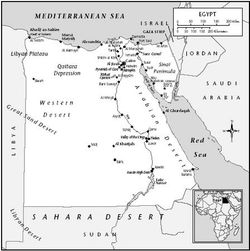




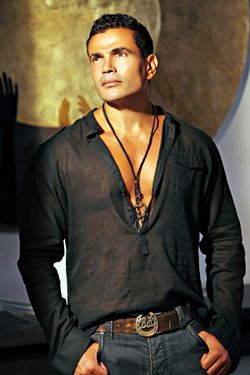
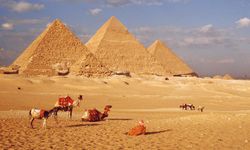
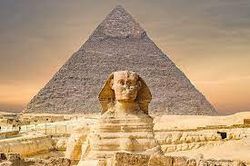
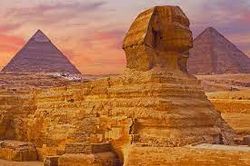
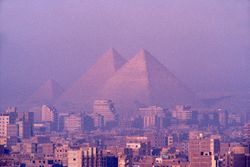
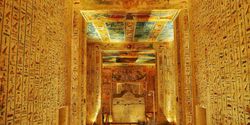
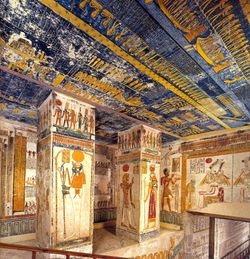
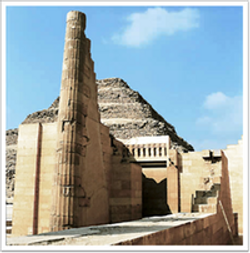

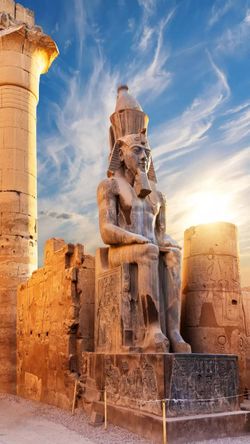
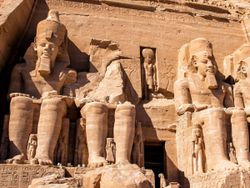
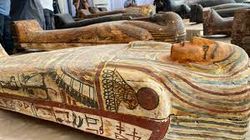
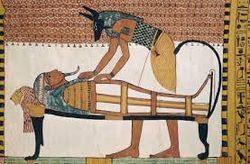
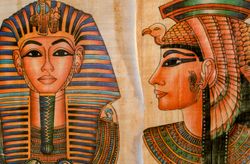








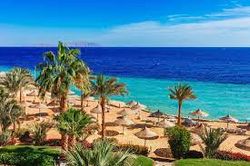





1. Egyptian Culture
Egypt, the 15th most populous country in the world, is an Arab nation bordered by Israel, Libya and Sudan. It has a global reputation due to the legacy of its ancient cultural roots. While the country’s heritage remains a source of great pride, Egypt’s contemporary culture has also been shaped by more recent historical events. Many traditional values continue to be defining aspects of Egyptian culture; however, these are now accompanied by new ideas and values. Furthermore, as the gateway between northeast Africa and the Middle East, it has been significantly influenced by various interactions with other cultures and countries.
2. Geography and Spaces
An overwhelming majority of the population (approximately 95%) reside in the narrow strip of fertile land along the Nile River, which is roughly 5% of the country’s land area. This means that crowded conditions are a normal part of daily life for most Egyptians. Many people have largely adapted to this close proximity.
The Nile River separates the two main regions of Egypt: the ‘Valley’ or ‘Sa’id’ (south of the Nile) and the Delta (north of the Nile). These two regions vary greatly in regard to general attitudes and culture. Those in the south (Sa’id) are often more conservative and religious. They may refer to themselves as people of ‘honor’ . Those who live in the north, particularly from the larger cities, are often more liberal and open to a greater diversity of lifestyles. The diversity in the large cities of Cairo and Alexandria is in part due to the presence of immigrants, refugees and tourists. Lifestyle patterns in these areas generally resemble globalized urban culture. In addition, the strong economic and cultural influence of the United States can be seen in the art, literature and cuisine of urban Egypt.
3. The tendency to adopt more collectivist or individualist attitudes often varies according to one’s social class and living arrangements. Those who can afford to live in larger homes often lean towards an individualistic mindset. Meanwhile, those in slums or rural areas tend to emphasis a sense of community over individual privacy and private property.
The concentration of the population along the Nile contributes to high birth rates, leading to a rapidly expanding population. Accordingly, over half of the Egyptian population are 24 years old or younger. Young children are seemingly everywhere, serving as a constant reminder of the country’s population growth.
4. Social Stratification
A person’s place of origin and social class are important determinants for guiding how people interact with one another. The social class an Egyptian is born into tends to dictate many aspects of their everyday life and access to opportunities. Status is defined more in terms of one’s family background and reputation rather than wealth, making social mobility difficult.
One marker often used to determine social class is the university one attends. Education is highly valued in Egypt and families invest a lot in educating their children regardless of their income. Attaining a high level of education is one of the few avenues for social mobility. Moreover, being able to speak fluent English or French often indicates that one is highly educated and probably from an upper social class.
5. In recent years, the rigid social class structure has undergone significant change, with digital media – particularly social media platforms – now playing an important role in the dissemination and expression of Egyptian culture. Given the country’s low rates of literacy, digital media has helped make popular culture and the arts more widely accessible. Moreover, the Internet has provided access to several types of information previously blocked by government censors. Access to alternative ideas led many Egyptians to question the status quo, and this played an important role in the Egyptian Revolution.
6. Etiquette
It is considered impolite to point the toe, heel or any part of the foot toward another person. Showing the sole of one’s shoe is also impolite.
Modest dress and presentation is highly valued in Egyptian culture.
Greetings often occur before any form of social interaction. For example, a person joining a group is expected to greet all those present.
Generally, the younger defer to the older through showing respect, not challenging their seniors and using special verbal terms of address for aunts, uncles, grandparents and older non-relatives.
If your counterpart identifies as Muslim, it is forbidden to walk in front of someone who is praying or to talk to someone who is currently in prayer.
People are expected to show gratitude when offered a compliment. This is done by responding with an equally respectful compliment on the same subject or, if they are Muslim, wishing Allah’s (God’s) blessings.
7. Visiting
Not visiting someone for a long period of time is considered a sign of the relationship’s insignificance, especially one’s family.
Egyptians generally have a relaxed attitude towards time and strict punctuality is not commonly practiced.
Adult children who live outside of their parents’ home often visit their parents on Fridays and holidays.
When visiting a mosque or someone’s home, one is required to remove their shoes before entering.
Egyptians tend to prepare elaborate and lavish meals when they have guests.
If invited to an Egyptian’s home, offering good quality chocolates or sweets to the hostess as a token of gratitude is appreciated.
If the reason for being invited to an Egyptian’s home is for a dinner party, wait for the host or hostess to indicate the seat they have reserved for you.
Guests should always wait for the host to serve them rather than serving themselves.
8. Eating
It is considered to be a compliment to take second helpings.
Leave a small amount of food on your plate once you have finished eating. This symbolizes abundance and serves as a compliment to the host for providing so well.
It is not common for people to salt their serving of food as it is considered to be ‘unnecessary’.
Complimenting food should be done in a statement rather than a question. For example, questioning the method of the cooking (e.g. ‘how was this made?’) means that one is skeptical of the food.
Avoid eating communal food with your left hand, as this hand is generally reserved for personal hygiene. Only the right hand is used when eating food with one’s hands.
Alcohol is generally not offered nor is it consumed with food. Only offer alcohol to your Egyptian counterpart if you know that they consume it.
It is considered offensive to offer pork to Muslims as pigs and products relating to pigs (such as pork and pig leather) are prohibited in the Islamic religion.
Top 20 Traditional Egyptian Dishes
When you come to Egypt you should have to try different types of Egyptian food because of the Egyptian dishes are very tasty and worth the experience.
Ful Medames
Baba Ganoush
Mahshi
Besarah
Alexandrian Kebdah
Sayadiyah Fish
Hawawshi
Kanafeh
Umm Al
Feteer Meshaltet
Basbousa
Baked sweet potato
Tamiya
Koshari
Shawarma
Kebab and Kofta
Mulukhiyah
Pigeon
Egyptian Desserts
Baklava
8. . Gift Giving
Gifts are generally given and received with both hands or only the right hand.
A small gift to your Egyptian counterpart’s children is a welcome gesture.
Gifts tend not to be opened when received.
If you are invited to an Egyptian's home for dinner, bring good quality chocolates, sweets or pastries to the hostess.
Do not give flowers, which are usually reserved for weddings or the ill, unless you know that the hosts would appreciate them.
Gifts are not opened when received.
9. Ethnicity and Identity
Generally, Egypt is quite a homogeneous society, with 99.6% being ethnically Egyptian. Most of the Egyptian population identify as Muslim, with the majority belonging to the Sunni variant . Islamic tradition has a deep influence on the identity of many Egyptians, due to its longstanding presence and position in the culture. Perhaps the most significant unifying component of the Egyptian identity is the language as nearly all Egyptians speak in the Egyptian dialect of Arabic. However, there is significant diversity within Egyptian dialects of Arabic, so much so that some native speakers may not be able to understand each other.
10. The country is important to the Arab world, with the Arab League headquarters being located in Cairo. Moreover, Egypt is one of the Arab world’s literary centers, producing many of modern Arabic literature’s foremost writers. However, Egyptians continue to debate whether they feel a stronger affinity to being ‘Egyptian’ or ‘Arab’ on both an individual and national level, indicating that Egyptian and Arabic culture are not synonymous.
Honor and Dignity
Honor in modern-day Egypt is more commonly determined by the degree to which people exhibit and respect common cultural values of modesty, loyalty, honesty and hospitality. For example, the way they dress, the way they present themselves, the hospitality they show friends and guests, and the respect they give the elderly and those in authority can be perceived to reflect their honor and dignity (sharaf and karama). Pride and status is found in being helpful, generous and charitable to others. Everyone is also expected to be loyal to his family and ‘a man of his word’. As Egypt is generally a collectivist society, the needs of one’s family or community typically take precedence over one’s personal needs or desires.
11. One’s honor is intertwined with family reputation in Egypt and, thus, preservation of honor is often understood in terms of the collective rather than the individual. In the event of an individual’s failure or shortcoming, the whole family’s name and honor is often affected, and shame is felt by everyone related to the person. In this way, there is a cultural pressure for individuals to protect their family’s reputation by stressing their positive qualities, emphasizing their family members’ achievements and adhering to social expectations. As honesty is highly valued in Egyptian culture, failing to uphold one’s promise is a quick way to bring dishonor on one’Egyptian Honor
Honor is an important facet of interpersonal relationships.
Respect and esteem for people is both a right and an obligation.
An individual's honor is intricately entwined with the reputation and honor of everyone in their family.
Honor requires that Egyptians demonstrate hospitality to friends and guests.
It also dictates that people dress as well as their financial circumstances allow, and show proper respect and deference to their elders and those in authority.
A man's word is considered his bond and to go back on your word is to bring dishonor to your family.
12. About 96 percent of Egypt's population lives in the Nile Valley, which comprises about 4 percent of the area of the country; most of the economic and social activity occurs there. The rest of the country is desert. This includes the scrub desert along the Mediterranean coast between the Nile Delta and Libya, and along the north coast of the Sinai Peninsula; the mountainous desert between the Nile Valley and the Red Sea; and the western desert west of the Nile Valley. Rainfall in these areas is rare to nonexistent. Only the Mediterranean coast has rain that is reliable enough to support marginal human activity, with some agriculture and animal husbandry. The Western Desert has five oases that support a settled population and serve as communication centers (Khārga, Dakhla, Farafra, Baharīya, and Siwa). There are smaller oases in the Sinai peninsula (Firan), and even in the arid Eastern desert there are occasional springs, two of which provide water to Christian monasteries.
13. The three Giza pyramids (sometimes together with the Great Sphinx) represent the most important and obvious visual symbol of the Egyptian nation. It is the most widespread "postcard" image, and also the title of the major daily newspaper Al-Ahram (with the three pyramids on the top of the front page). The symbol of Egypt Air, the national airline, is Horus, a figure from ancient Egyptian religion represented as a falcon.
Other symbols derive from the country's Islamic heritage. The nineteenth-century Mohammed Ali mosque built on top of a medieval citadel is visible from different parts of Cairo. Of more architectural significance are the Ibn Tulun and Sultan Hassan mosques in Cairo and the Qaitbey mausoleum and school in the northern cemetery.
14. One important symbol is derived from the country's geography: the Nile River. The Nile is invoked in different contexts, each representing a facet of the country's identity or prevalent themes of the culture. It is associated with immortality, romance, or glory (the construction of the high dam). In recent years, Nile cruises have become a favored tourist attraction, and "cleaning up the Nile" has become an environmental slogan.
15. Ethnic Relations.
The main issue in ethnic identity arises not within the nation, but in terms of the nation being part of the wider Arab world. People debate whether being Egyptian or being Arab is more important. The Arab world is tied together by shared language and culture, including shared Islamic values and practices, and by a sense of shared political problems—even when countries and people take different positions, they focus on the same problems.
16. Urbanism,
Architecture, and the Use of Space
Villages and cities are the two major settlement types. There has been, however, an increasing overlap in social and economic functions which, in turn, manifests itself in an increasing blurring of distinctions regarding architectural features of both city and village.
Villages consist of a core residential area surrounded by fields, and agricultural land. The core consists of contiguous one-story mud-brick houses built along narrow dirt roads. The houses incorporate a stable for the farm animals. Owning a cow or a water buffalo represents a high investment, and since animal theft is feared, farmers are keen to keep their animals closely supervised. Rooftops are used for storage of dung cakes or straw, for ovens and mud granaries, or to keep chickens or rabbits.
17. Since the mid-1970s the mud-brick houses have progressively been replaced by houses made of fired bricks, and growing population and prosperity have led to an expansion of the built-up surface of the village. Red-brick houses are healthier, provide more amenities, and are more practical for modern life, though they are more expensive and less adapted to the climate. People can build them several stories high, which uses less of the scarce agricultural land.
Each village has at least one mosque. The mosque is communal and public for men. Many of the mosques are collectively built by the villagers themselves. Another public space is the guest house, which is usually a large hall built and used collectively by an extended family. Here mourners receive condolences, and well-wishers extend congratulations for returning pilgrims. Again, guest houses represent mainly male space. Churches often include a space for social gatherings of a family or religious nature. Both women and men actively participate in the marketplace. Weekly markets in big villages or district towns are both a place where commodities are traded and an important social arena where people exchange news and maintain social relationships.
18. Urban Egyptians usually live in rented apartments. Individual houses are rare. One of the reforms of socialism was to establish a form of rent control that kept rentals low. Newer apartments, however, are not under rent control, and rents are much higher. Some people own apartments in a condominium-like arrangement. Occasionally an extended family may own an entire building and make the apartments available to its members. In the 1980s and 1990s living conditions in urban areas improved, albeit unequally, and such amenities as telephones, television, and air conditioning became more common. Nationwide 73.5 percent of households are connected to the potable water system, and 95.7 percent to the electrical system.
19. Food and Economy
Eating is an important social activity, and is central to marking special events and ceremonial occasions.
The most important food item in daily life is the bread loaf. In rural areas, bread is usually baked by women in mud ovens at home. In cities, bread is sold in bakeries. The standard loaf is strictly regulated by the government in terms of weight and rice, and is one of the very few items that still receives a state subsidy.
The indigenous cuisine relies heavily on legumes. The main national dish is foul . This is a dish of fava beans cooked slowly over low heat and seasoned with salt, lemon, cumin, and oil. It is usually eaten for breakfast. Another common dish is tamiyya or falafel which is made from crushed fava beans mixed with onions and leeks and fried in oil. Also popular is koshari , a mixture of rice, black lentils, and macaroni covered with tomato sauce and garnished with fried onions. These dishes are prepared at home, but are also sold in stalls all over Cairo.
20. One main distinction between traditional, usually rural, and urban middle-class eating habits concerns the seating and service of food. In villages, people sit on a carpet, and food is placed on a very low round wooden table. Each person has a spoon, and everyone eats directly from the service dish. In cities, people sit on chairs around Western-style dining tables. Each person has his or her own plate, spoon, fork, and knife. In rural areas, the main meal is after dark; in the urban areas it is often in late afternoon after office workers return home.
21. Egypt is a rich agricultural country, with some of the highest yields per unit of land in the world. The main crops are cotton, sugarcane, wheat, maize, and fava beans with substantial areas given over to fruit orchards (primarily citrus) and to vegetables. Livestock (cattle, water buffalo, sheep, and goats) is also important and some land is used to grow fodder crops for these animals. There are two crops a year on average. Individual farmers try to be self-sufficient in certain crops such as wheat, but on the whole they market what they grow and procure their own food also from the market.
22. The main inputs to agriculture are land, water, and labor. Land is generally owned by private individuals in small holdings, with an average of about 2.5 acres (1 hectare). From 1952 to 1997 tenancies were guaranteed (those renting farmland could not be expelled except under rare conditions), but this guarantee was repealed in 1997. By that year, rented land covered about one-sixth of the farmland, and tenants tended to be poorer than farmers who were also owners. Nevertheless, tenants had learned to treat farmland as if they owned it, and after 1997 had to adjust to higher rents or the loss of the land.
Irrigation is central to Egyptian agriculture, and water is supplied by the government to the farmer through a network of canals. Payment for water is indirect, through the land tax paid by the larger farmers. Water is perceived to be free, and the government continues to support the policy that water should be provided free to farmers. Since farmers must lift the water from the canals to their fields they do incur a cost.
23. An important signal of family identity is the personal name. Egyptians frequently do not have "family" names in the current Western sense of a last name that is shared by all members of an extended family. Instead, each person has a given name, followed by the given names of his or her father, grandfather, and so on. For legal purposes one's name is usually "given name, father's name, grandfather's name," resulting in three given names (e.g., Hassan Ali Abdallah). Thus one carries one's paternal lineage and one's status in one's name. In certain parts of rural Egypt, where genealogy is important, people learn to recite a long list of paternal ancestors. Muslim men are likely to have religious names but some have secular names. Christians may carry the names of saints, or may be given names that are Arabic rather than religious. Women also have religious names but sometimes have more fanciful ones, including names of foreign origin. Women often do not change their names upon marriage.Family Values
The family is the most significant unit of Egyptian society.
Kinship plays an important role in all social relations.
The individual is always subordinate to the family, tribe or group.
Nepotism is viewed positively, since it is patronage of one's family.
The family consists of both the nuclear and the extended family.
24. Socialization
Child Rearing and Education. In all parts of Egypt and among all social classes, having children is considered the greatest blessing of all. Caring for children is primarily the women's responsibility. Many Egyptian women (both Copt and Muslim) abide by the Koranic directive to breast-feed children for two years. Grandparents and other members of the extended family play an active role in bringing up children.
There is a general preference for boys over girls, although in infancy and early childhood children of both sexes are treated with equal love and care. The preference to have at least one son is related to the desire to have an heir, and so provide continuity from father to son.
Social Class
Social class is very apparent in Egypt since it determines your access to power and position.
The social class an Egyptian is born into dictates their everyday life and the opportunities they will have.
There are three social classes: upper, middle, and lower.
Status is defined more by family background than by absolute wealth.
There is little social mobility.
25. Education is highly valued in Egypt, and families invest a lot in that area. Even low-income families try to educate their children as much as possible. Education, especially having a university degree, is considered an important avenue for social mobility. But many families cannot afford to educate their children beyond the elementary level. In addition, many children have to work at an early age to help support their families.
Another rule of etiquette is that greetings must precede all forms of social interaction. A person joining any kind of group, even of strangers, is expected to greet those already present. In less anonymous situations handshakes are due. Embracing is also common as a form of greeting.
Dining Etiquette
If you are invited into an Egyptian's house:
You would normally remove your shoes before entering.
Dress well and conservatively. Appearances are important to Egyptians.
Compliment the host on the house.
Table manners
Wait for the host or hostess to tell you where to sit.
Eat with the right hand only.
It is considered a sincere compliment to take second helpings.
Always show appreciation for the meal.
Salting your food is considered 'unnecessary'.
Leave a small amount of food on your plate when you have finished eating. Otherwise they will keep filling it up for you!
Food and hospitality are central to the Egyptian way of life.
Greetings are based on both class and the religion of the person.
It is best to follow the lead of the Egyptian you are meeting.
Handshakes are the customary greeting among individuals of the same sex.
Handshakes are somewhat limp and prolonged, although they are always given with a hearty smile and direct eye contact.
Once a relationship has developed, it is common to kiss on one cheek and then the other while shaking hands, men with men and women with women.
In any greeting between men and women, the woman must extend her hand first. If she does not, a man should bow his head in greeting.
26. People are generally addressed by their given name, often preceded by a title of some kind (' am, or uncle, is the all-purpose title for men; others include hajj for a pilgrim returned from Mecca or simply for an older man, duktor for a person with a doctorate, and muhandis for an engineer). To address someone by name alone is impolite.
One important rule of etiquette is to treat guests cordially and hospitably. An offering, usually tea or a soft drink, is the least a visitor expects. The first drink is sometimes called a "greeting." Cigarettes are often also offered as hospitality. In rural areas, some people avoid visiting those they consider to be of lower status than themselves. From this point of view, visits are always "up," and hospitality is always "down," i.e., the higher-status host provides hospitality for the lower-status guest.
27. In general, young defer to old and women to men. Members of the younger generation are expected to show signs of respect and not to challenge their seniors and must use the special terms of address for aunts, uncles, and grandparents, as well as for older non relatives. Juniors should not raise their voices to elders, nor should they remain seated while an older person is standing up. With increasing disparities between classes and the spread of patronage ties, there is an inflation in deferential terms of address. This includes the resurgence in the use of terms that were previously official titles but were abolished after 1952, such as Pasha and Bey.
Facts and Statistics
Location: North East Africa bordering Palestine (Gaza Strip) 11 km, Israel 266 km, Libya 1,115 km, Sudan 1,273 km
Capital: Cairo
Climate: desert; hot, dry summers with moderate winters
Population: 86,895,099 (2014 est.)
Ethnic Make-up: Eastern Hamitic stock (Egyptians, Bedouins, and Berbers) 99%, Greek, Nubian, Armenian, other European (primarily Italian and French) 1%
Religions: Muslim (predominantly Sunni) 90%, Christian 10% (majority Coptic Orthodox; other Christians include Armenian Apostolic, Catholic, Maronite, Orthodox, and Anglican) [2015 est.]
Government: republic
Business Culture: Ranked 45th in The Business Culture Complexity Index™
Language in Egypt
For almost 13 centuries Arabic has been the written and spoken language of Egypt.
Before the Arab invasion in AD 639, Coptic, the language descended from ancient Egyptian, was the language of both religious and everyday life for the mass of the population; by the 12th century, however, it had been totally replaced by Arabic, continuing only as a liturgical language for the Coptic Orthodox Church.
Arabic has become the language of both the Egyptian Christian and Muslim. The written form of the Arabic language, in grammar and syntax, has remained substantially unchanged since the 7th century.
In other ways, however, the written language has changed the modern forms of style, word sequence, and phraseology are simpler and more flexible than in classical Arabic and are often directly derivative of English or French.
By undefined
38 notes ・ 8 views
English
Elementary